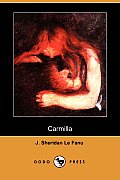
Monsters.
Slathering, brutishly dumb and strong. Carnal serpents of sullied desire. Unrelenting wisps of evil that whip at our greatest fears. Magnificent bastards, all of them.
In The Power of Myth, Joseph Campbell described monsters as "explod[ing] all of your standards for harmony, order, and ethical conduct." But why do we need them? Why are we still writing about monsters in our shiny world where mystery has been conquered and exposed? Why didn't we leave them behind?
Originally, in stories like Beowulf, monsters served as an ultimate test for the hero, beasts filled with rage and power. The hero faces his/her fear, and slays the monster through ingenuity or amazing strength. The victorious heroes show themselves to be examples for their communities, transcending their mere mortality to become golden superhumans (unlike Beowulf's forever scarpering warriors, possibly to "Yakety Sax"). In contrast, the monster lays defeated, the threat removed, a wise lesson and example for all. Goodnight.
Eventually, as we grew in sophistication, we created monsters that moved beyond their vengeful, violent, and voracious ways. Monsters that represented our greatest sins, like the monsterfied seven deadly sins in Piers the Plowman or any number of grotesque additions to ecclesiastical art. We created monsters of ourselves — the other-worldly, all powerful witches (see Macbeth for their incarnation as political advisors). Imagination and fear ran riot — if a monster can be human, how can we tell them apart?
But monsters had become morality's bitch.
 Thankfully, the vampire craze of the 1700s (and Erzsebet Bathory prior) brought some sleaze and lascivious grime back into monster tales. Vampires who grind into young maidens, draining them of their innocence in both Carmilla and Varney the Vampire. Slowly, motivations for monsters became more elaborate and detailed. They covet, they love, they despair, fight, and sometimes they get all emo and jump into Mount Vesuvius in a fit of boredom.
Thankfully, the vampire craze of the 1700s (and Erzsebet Bathory prior) brought some sleaze and lascivious grime back into monster tales. Vampires who grind into young maidens, draining them of their innocence in both Carmilla and Varney the Vampire. Slowly, motivations for monsters became more elaborate and detailed. They covet, they love, they despair, fight, and sometimes they get all emo and jump into Mount Vesuvius in a fit of boredom.
Could it be that there is a part of us that thrills in the monster? Is that why we need them? Can we see part of ourselves and others in their rampages? The stories that quicken our pulse and, if they're good, make us leap up and do a quick lap of the room (oh, don't try to deny it)?
Or is it that disquieting feeling that maybe, just perhaps, we wouldn't mind having a bit of that monster in us... or, even, worse, to succumb to its